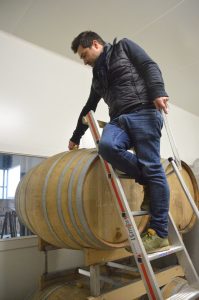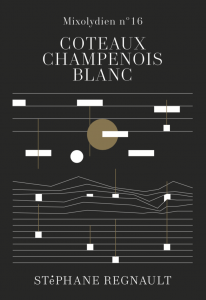A Primer to ‘Coteaux Champenois’ Blanc Wines
Contrary to popular belief, not all wine produced in Champagne is sparkling. Small amounts of still wine labeled under the ‘Coteaux Champenois’ designation are also made in red, white, and rosé formats-- and these wines should definitely not be dismissed.

Vinified from the region’s seven permissible grapes (two of which are red-skinned yet contain clear flesh), these bottles are actually some of the most compelling wines to come out of the region.
‘Coteaux Champenois’ wines can be produced across any of Champagne’s five major regions: Montagne de Reims, Vallée de la Marne, the Côte des Blancs, the Côte de Sézanne, and the southerly Côte des Bar (Aube). The still blanc bottlings are most commonly produced from the region’s five white grapes (Chardonnay, Pinot Blanc, Pinot Gris, Petit Meslier, and Arbane), though some vignerons choose to create their Coteaux Champenois Blanc wines with direct-pressed juice from Pinot Noir and/or Pinot Meunier.
Both Etienne Calsac and Stéphane Regnault have recently begun bottling still white wines under the Coteaux Champenois appellation. “I vinify the wine as if it were for Champagne, though if a barrel is behaving differently, that is, if it’s more apt to become a Coteaux Champenois, then I continue to follow it for a bit longer to see its evolution,” says Régnault. Régnault equally points out that if and when he decides to vinfiy a Coteaux Champenois, he doesn’t leave it in oak for a long time. “[My current] Coteaux Champenois spends 15 months in oak and is bottled directly after– pretty simple!” he exclaims.



Etienne Calsac produced his first Coteaux Champenois cuvée back in 2018. Fruit came from the ‘Les Fours’ parcel in the Côte de Sézanne and just one barrel was made. “The assemblage was 50% Pinot Blanc, 43% Petit Meslier, and 7% Arbane,” he explains. “I wanted to push my ‘Revenants’ project by vinifying the ‘forgotten grapes’ of Champagne, but in a still wine format.” Calsac’s Coteaux Champenois wine is made with a light skin-contact (not maceration) and is bottled unfiltered.
The wines of Coteaux Champenois are recognized by the French Appellation d’Origine Controlée system (AOC). The appellation was created in 1974 and covers still red, white, and rosé wines produced within the region. Rosé outside of the Rosé de Riceys appellation is quite rare, and the production of Coteaux Champenois still reds and whites also remains relatively small, given the high demand (and much higher profit margin) for creating sparkling wine from the same land. However, these wines are some of the most unique and interesting bottles to come out of the region. We’d recommend snagging a bottle or two, should these rare cuvées come your way.




